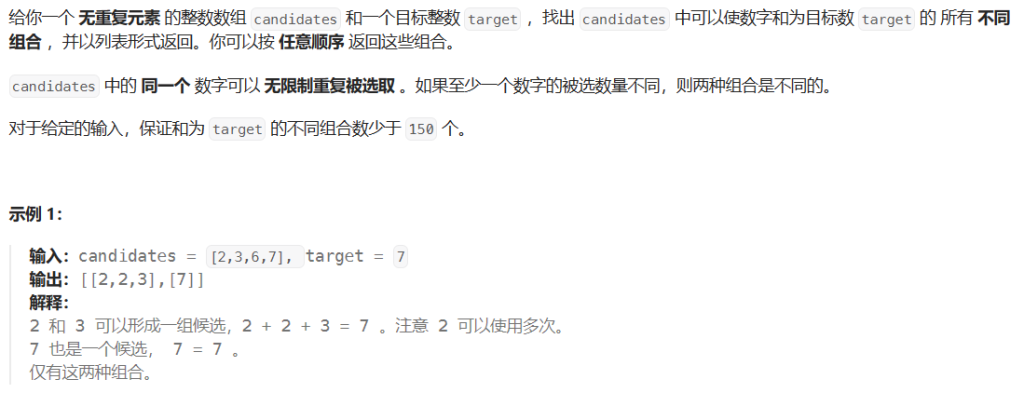题目描述

思路
像这种求一个个具体方案的题,大概率都是用递归+其他算法去求的。这道题也没什么例外,要看一个数x能不能找到另外几个数,加和成为target,就要看接下来的数能不能凑成target-x。一直向下递归,直到某一层target==0,此时的方案就是可行的。
这种DFS式的搜索相当像一棵树,对于我们而言,只有target==0的叶节点到根节点的路径是正确的方案之一。
解题方法
根据以上的思路,我们就能写出一般的DFS枚举搜索。很幸运的是,这题不加剪枝的暴搜是可以过的。

而对于不限定数组内元素顺序的题目,我们可以排个序,在接下来的DFS中,如果当前的数candidates[i]已经使得target-candidates[i]<0了,后面的所有数也不需要考虑了,差值一定都小于0,都是非法的。

今天才知道,Java当中也有双端队列Deque,这同样可以优化时间复杂度,但对于一个已经排好序的数组来说,效果不是很明显。
复杂度
时间复杂度:自己粗略算了一下 ,应该是O(n+n/2+n/3+……+1)=O(n)
空间复杂度:就是递归最大深度,O(n)
Code
class Solution {
private Deque<Integer> list=new ArrayDeque<>();
private List<List<Integer>> ansList=new ArrayList<>();
public void DFS(int nx,int[] candidates,int target){
if(target==0){
ansList.add(new ArrayList<>(list));
return ;
}
for(int i=nx;i<candidates.length;i++){
if(target-candidates[i]<0)break;
list.add(candidates[i]);
DFS(i,candidates,target-candidates[i]);
list.removeLast();
}
}
public List<List<Integer>> combinationSum(int[] candidates, int target) {
Arrays.sort(candidates);
DFS(0,candidates, target);
return ansList;
}
}
